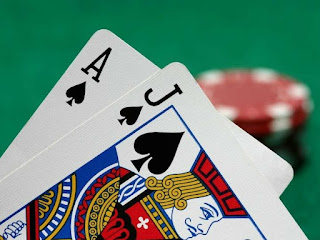A Guide to Four Card Poker
From name alone, Four Card Poker seems as though players could anticipate a rerun of Three Card Poker. However, there are exciting bends in the road that make Four Card Poker its own game with its own interest.
Overview of Four Card Poker
Four Card Poker has a bet play choice and an Aces Up choice. That is like Three Card Poker's bet play and Pair Plus choices. 카지노사이트
A key contrast is that in the risk play segment, dealers don't need to make a passing hand for play wagers to be dynamic. In Three Card Poker and numerous poker-based games, the house edge comes from the passing hand limitation that prompts fractional settlements on many winning player hands.
So how does the house get an edge? By managing multiple cards. Players each get five cards and the seller gets six. From those cards, everybody makes their best four-card hand.
That allows the seller more opportunities to make a superior hand. Overall, the vendor hand will be higher than the player's, giving the house its edge.
In any case, the edge is generally little for poker-based games. As per computations at wizardofodds.com, the house edge in the risk play segment is 2.78% of the bet, or 1.30% of absolute bets. That contrasts well and the 3.37% of the risk or 2.01% of complete bets in Three Card Poker.
We should take a gander at interactivity and methodologies, first for best play, then, at that point, for Aces Up.
Ante-Play
Rankings of hands are somewhat not quite the same as most poker games. The lead hand is four of a sort, outclassing straight flushes, including royals.
After four of a sort, hand positions all together are straight flush, three of a sort, flush, straight, two sets, match, and unpaired high card. Note that three of a sort outclasses flushes and straights, and there are no full houses in four-card hands.
To begin a hand, you should put a bet. Simultaneously, you might make an Ace Up bet, however that isn't compulsory.
You then manage five cards and the vendor gets one card face up and five face down. Cards are managed from a solitary deck, with a new mix for each hand.
After you take a gander at your cards, you should choose whether to crease or raise. While raising, you should wager to some extent however much your bet, yet may wager up to multiple times the bet. 안전한카지노사이트
Strategy
The Four Card Poker system includes when to crease, when to raise and the amount to raise.
There are a few accessible systems, with the more perplexing bringing the best returns. We should view a high level system and a novice methodology as definite at wizardofodds.com. The house edge of 2.8% of the bet with the high level procedure increments to 3.4 percent with the fledgling system.
The fledgling system, initially conceived by regarded games examiner Stanley Ko, is simple. Anybody playing Four Card Poker for a difference in speed ought to have the option to rapidly dominate it.
It requires a 3X raise in the event that you have a couple of 10s or better, or a 1X raise with sets of 2s through 9s.
Crease all hands under a couple.
Aces Up
The other bet in Four Card Poker is simple. You don't need to beat the vendor and there are no systems to learn.
In Aces Up, you win any time you have a couple of Aces or better. That makes it very much like Three Card Poker's Pair Plus, then again, actually coordinates lower than Aces don't win.
There are seven compensation tables accessible from the producer, yet by the far the most widely recognized pays: 50-1 on four of a sort, 40-1 on a straight flush, 8-1 on three of a sort, 5-1 on a flush, 4-1 on a straight, 3-1 on two sets, and 1-1 on a couple of Aces.
You'll win on just around 19% of hands, yet the adjustments are enormous enough that the house edge is 3.89%. By correlation, the house edge on the most well-known variant of Three Card Poker's Pairs Plus is 7.28%.
The risk play segment is a more ideal arrangement, yet in general Four Card Poker gives players a fascinating choice. It's simple while requiring a somewhat more intricate wagering system than Three Card Poker. 온라인카지노

.jpg)


Comments
Post a Comment